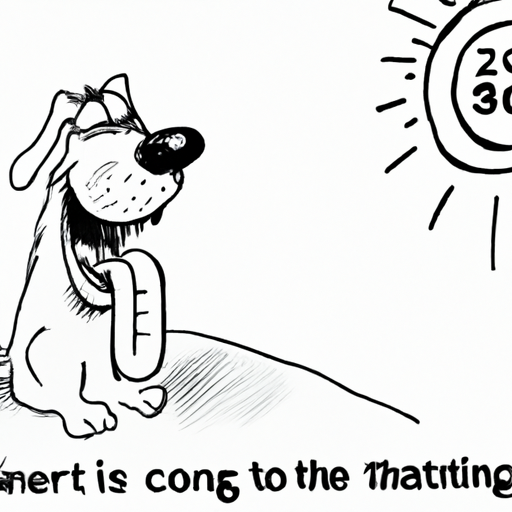Understanding Your Dog’s Heat Cycle
As a caregiver, it’s crucial for you to understand your dog’s heat cycle. Your female dog will typically enter her first heat cycle between six and nine months of age, although this can vary by breed. The heat cycle lasts anywhere from two to four weeks and generally happens twice a year. During this period, you may notice changes in your dog’s behavior and physical characteristics, and yes, increased panting can be one of these signs.
Why Do Dogs Pant During Heat?
Panting is a normal part of a dog’s behavior, but it can become more pronounced when they are in heat. Your dog may pant more than usual because of the hormonal changes happening in her body. This increase in hormones can also cause a slight increase in body temperature, which the dog tries to regulate through panting. Panting in dogs can be akin to the hot flashes experienced by humans during certain hormonal fluctuations.
Other Signs Your Dog May Show When in Heat
In addition to panting, you may notice several other signs when your dog is in heat:
- Swelling of the vulva
- Spotting or bleeding
- Increased urination
- Changes in behavior such as clinginess or aggression
You may also notice male dogs showing a heightened interest in your female dog during this time.
How to Care for Your Dog During Heat
Here are some ways you can help your dog during her heat cycle:
- Provide plenty of fresh water: Due to increased panting, your dog may become more dehydrated than usual.
- Keep her comfortable: Provide a quiet and comfortable space where she can rest.
- Use doggy diapers: This can help manage spotting or bleeding and keep your home clean.
- Monitor her behavior: Pay close attention to any changes in behavior or physical signs that may indicate distress.
When to Consult a Vet
If your dog’s panting becomes excessively heavy or is accompanied by other signs of distress such as restlessness, loss of appetite, vomiting, or diarrhea, it’s time to consult a vet. These could indicate a health issue that needs immediate attention.
| Signs of Distress | Action |
|---|---|
| Heavy panting | Consult a vet |
| Restlessness | Keep dog calm, if continues consult a vet |
| Loss of appetite | Monitor for a day, if continues consult a vet |
| Vomiting or diarrhea | Consult a vet immediately |
Frequently Asked Questions (FAQs)
Q: Do all dogs pant when in heat?
A: Not all dogs will pant when in heat, but many do due to the hormonal changes and slight increase in body temperature.
Q: How long does the heat cycle last in dogs?
A: The heat cycle in dogs typically lasts between two to four weeks.
Q: How often do dogs go into heat?
A: Dogs usually go into heat twice a year, although this can vary by breed.
Q: Can panting be a sign of something serious?
A: While panting can be normal, excessive or heavy panting can be a sign of distress or a health issue. If you’re concerned, always consult with a vet.
Remember, as a caregiver, your role is to ensure the well-being of your pet. Understanding your dog’s heat cycle and how to care for her during this time is a key part of this responsibility.



